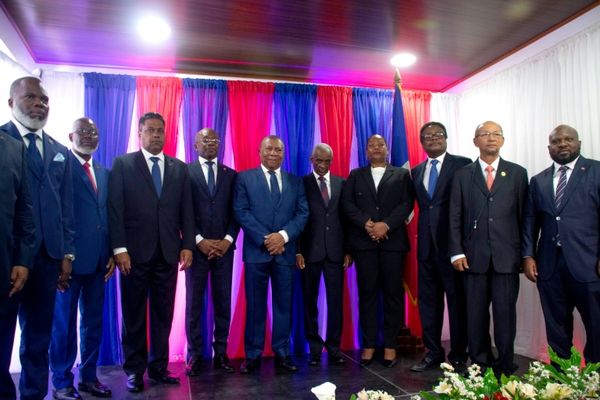The NDIS is a case study in the crucifying complexity of policy and service delivery. It is also a case study in the failings of digital government services.
This is quite a statement about a national program that commenced transitioning to full scheme operations just six years ago on 1 July 2016, having commenced in trial sites on 1 July 2013. It was during this same period (January 2015) that the Digital Transformation Office, the predecessor of the Digital Transformation Agency also came into existence.
The stories of both are interwoven in the most unfortunate way.
Over the coming weeks, I will be sharing my thoughts on the future of the NDIS. Through a series of short articles I will explore issues that I know affect hundreds of thousands if not millions of Australian’s interacting with the NDIS. These issues deeply affect me and my family.

I want to say that I am a passionate believer in the magnificent vision of the NDIS: I have not lost hope and I do not want people to lose hope. This series will cover the topics of complexity; assistive technology; the actuarial model; the NDIS operating model; co-design and algorithms.
In the final short article, I will explore where in the Commonwealth bureaucracy the NDIA as a national body should be located and governed.
My commentary is based on my and other submissions to the Australian Senate Joint Standing Committee on the NDIS, protected by Parliamentary privilege.
COMPLEXITY
The 2009 ‘Shut Out Report’ was a horrific exposé of the experience of people with disabilities and their families, of being abused, excluded, and ignored, suffering the entrenched complexity and bigoted attitudes of government and service providers alike.
Of course, the ‘Shut Out Report’ was one of the key triggers for the Australian Productivity Commission investigating the economic and social impacts of Disability Care and Supports. In the PC’s 2011 Report, I found a very interesting term – ‘confusopoly’ – used by one family to describe their experience of being overwhelmed by the complex and hard to navigate disability system.
The Disability Royal Commission continues to hear evidence of horrific complexity and abuse. And the various Inquiries of the Senate Joint Standing Committee on the NDIS over many years have received hundreds, if not thousands, of submissions detailing the stupendous complexity and the human and financial cost of it.
Complexity shuts people out and discriminates against people with disability. Algorithms have not and cannot fix this.
So, the NDIS was not only born from this complexity but was supposed to be a national response to it.
Unfortunately, the NDIS has created even more complexity. This is perhaps one of the NDIS’s greatest failings, but it is not irrecoverable.
And there are many causes of the NDIS complexity, which I will also cover in subsequent articles in this series. But in my opinion, the greatest cause of the NDIS complexity is the actuarial fiction of ‘primary disability’. This affects everything.
Putting in bluntly and simply, the NDIS system can only cater for one disability, which is called the ‘primary disability’. People have to pick one. Let that sink in.
The notion that a human is comprised of one or even a theoretical hierarchy of conditions is nonsensical.
According to Women with Disabilities Australia ‘…we would be hard pressed to find one of our members who has a ‘primary disability’. Many women with disability have a number of impairments, combined with chronic illness etc. The notion of ‘primary disability’ or ‘one disability’ is embedded in an out-of-date medical model.’
Imagine if this same fiction was applied to Medicare. Arbitrary funding for a ‘primary’ condition you have to pick. After that, fend for yourself.
Most people are not aware of this notion of ‘primary disability’ and apply to the NDIS on the basis of all their conditions and disabilities, supported by extraordinarily detailed evidence from their health care providers. And then at some point the person is told to pick one. As if anybody is actually able to do this, or even understand the consequences of such a decision to ‘pick one’.
In my view, this is a jeopardy situation: an ethics minefield.
The whole operating model panders to the complexity of this actuarial fiction. There are so many processes, systems, appeals, reviews, rules, administrative loops, turgid language, assessment reports, and human suffering because of it. Horrific system-wide costs and yet people still do not get the supports they need.
Hundreds of submissions to Joint Standing Committee on the NDIS inquiries document the nation-wide and human and financial costs of this. Including cost impact on the states, which already fund 50 per cent of the NDIS.
At the same time, consultant and legal costs balloon unchallenged, as if in perpetuity.
In an attempt to standardise things or perhaps give the appearance of cutting through the administrative complexity, personas and algorithms are constructed. These personas and algorithms are built on this actuarial fiction of ‘primary disability’.
Not only do these not address the cause of the complexity but have the effect of embedding and encoding the bias of this fiction.
The result is roboplans which we are seeing, and which will inevitably cycle into appeals, judicial reviews, and quite likely class actions. As with RoboDebt, there will simply be no escaping the consequences of these roboplans.
The starting point for the rebuilding of the NDIS, is to remove the actuarial fiction of ‘primary disability’.
This can and must be done. It will wipe out the immensely costly industry of complexity fed by consultants and the destructive and punitive legal fights with the most vulnerable people in Australia that goes along with it.
The second article in this series is on ’Assistive Technology’: the everyday mainstream technologies as well as the breakthrough innovations and the culture within the NDIA challenging this massive market.
Marie Johnson is the CEO of the Centre for Digital Business. She is a global award-winning digital authority and advocate for the humanitarian application of AI. Her experience encompasses the public and private sector experience in Australia and internationally, including leading Microsoft’s Worldwide Public Services and eGovernment industry based in Seattle.
Marie was Head of the Technology Authority for the National Disability Insurance Scheme responsible for the technology business case, co-design, and the creation of Nadia. For many years, Marie was the Department of Human Services Chief Technology Architect, with responsibilities including the architecture and technology business cases bringing together the massive systems of Centrelink, Medicare Australia, and the Child Support Agency.
You can follow her on Twitter at @mariehjohnson or visit marie-johnson.com.







